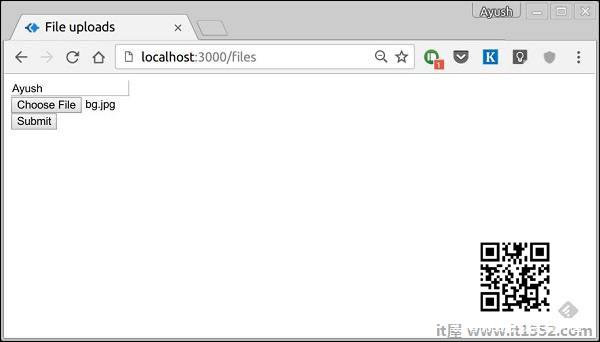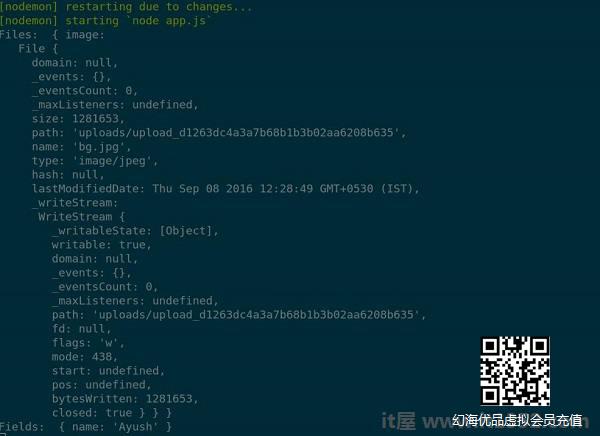Web应用程序需要提供允许文件上载的功能.让我们看看如何从客户端接收文件并将它们存储在我们的服务器上.
我们已经使用koa-body中间件来解析请求.此中间件还用于处理文件上载.让我们创建一个表单,允许我们上传文件,然后使用Koa保存这些文件.首先使用以下内容创建名为 file_upload.pug 的模板.
html head title File uploads body form(action = "/upload" method = "POST" enctype = "multipart/form-data") div input(type = "text" name = "name" placeholder = "Name") div input(type = "file" name = "image") div input(type = "submit")
请注意,您需要在表单中提供与上面相同的编码类型.现在让我们在服务器上处理这些数据.
var koa = require('koa');var router = require('koa-router');var bodyParser = require('koa-body');var app = koa();//Set up Pugvar Pug = require('koa-pug');var pug = new Pug({ viewPath: './views', basedir: './views', app: app });//Set up body parsing middlewareapp.use(bodyParser({ formidable:{uploadDir: './uploads'}, //This is where the files would come multipart: true, urlencoded: true}));var _ = router(); //Instantiate the router_.get('/files', renderForm);_.post('/upload', handleForm);function * renderForm(){ this.render('file_upload');}function *handleForm(){ console.log("Files: ", this.request.body.files); console.log("Fields: ", this.request.body.fields); this.body = "Received your data!"; //This is where the parsed request is stored}app.use(_.routes()); app.listen(3000);当你运行它时,你得到以下表格.

提交时,您的控制台将生成以下输出.

上传的文件存储在上述输出的路径中.您可以使用 this.request.body.files 访问请求中的文件,并通过 this.request.body.fields 访问该请求中的字段.